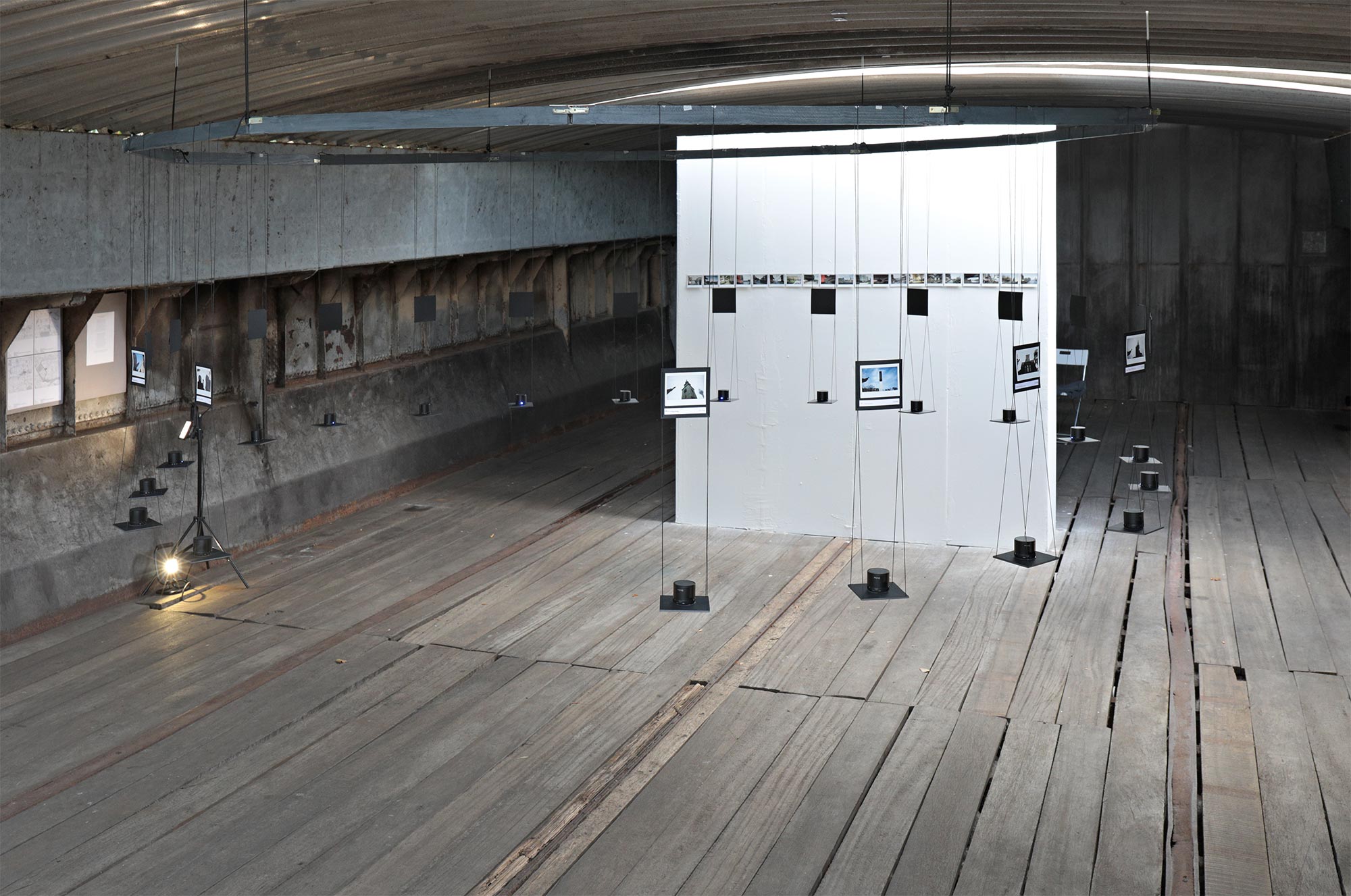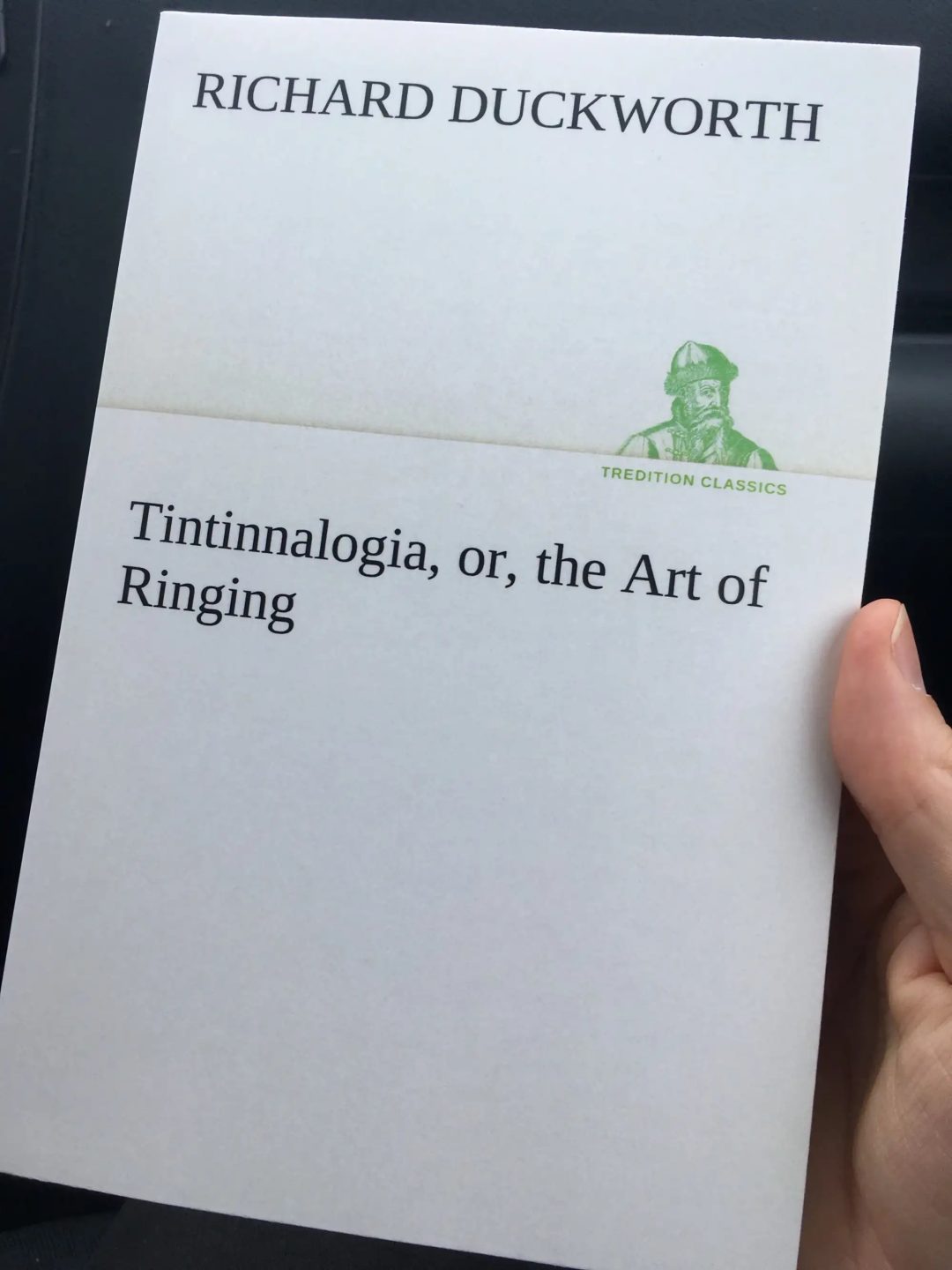The text below is from an artist talk about Carried Bells given at Ponderosa, Stolzenhagen, Germany, in August 2019, before the work had initially been presented. This post has been updated to now also include images and video from the work when it was presented in October 2019 at Hošek Contemporary in Berlin.

One of the most immediate and noticeable acoustic experiences of many cities, including the city of Berlin, are the sounds created by the daily ringing of church bells. These objects, often centuries old, are unique hand-made musical instruments. The process of creating, installing, and ringing them has aspects that are technological, artistic, social, musical, cultural, and ritualistic. The prominence of this regular bell-ringing is one of the conspicuous sounds of the city — though one that often fades into the backgrounds of our awareness.
Our curiosity about these sounds, and the history and context that surrounds them, has informed an upcoming new work, Carried Bells, which we will be talking about today. We’d like to talk firstly about the practical and material presentation of the work, and then afterwards about some of the conceptual questions that are interesting to us in presenting this work.
In our work to date, we have often used sounds that recur over time as material from which we collect or assemble layers or traces. These sounds have included satellite radio signals, groups of moving singers, frozen rivers, drums, and more. The work that we are currently researching, Carried Bells, has similarities with this approach, but applies it to an expanded social space, and a source of sound that we have been interested in for many years: church bells.
Practically speaking, Carried Bells is a process-based installation, organised around a task that recurs each day. This task is to record and ‘carry’ the sound of a ringing church bell from the city of Berlin. Each iteration of this task additionally includes photographs documenting the process. This means that for each day of the presentation of the work, we record the sound of a ringing bell (or a ringing peal of two or more bells), at a different location in Berlin, and photograph the process. We then re-play and loop this audio, via a small hand-carried speaker — and then we start to walk.
We keep playing this sound as we walk, transporting our speaker on foot, out of its original context, and publicly and audibly moving it through the city, back to the central collection point. Here, it is added to the accumulating total of recordings of bells from around the city, each accompanied by their own associated daily photographs. These images are taken using Polaroid-style analogue instant film, allowing for a physical artefact and visual image to accompany each sound. This repeating task adds a new layer to the emerging work each day. Over the course of presenting the work, we carry twenty bells, over twenty days. This results in a final material presentation of twenty small speakers, accompanied by images, maps, and video.
Conceptually, there are several aspects that have interested us in bells and bell-ringing as material to work with. We had three particular aspects that we are curious about: bells as computers, bells as mirrors of weapons, and bells as ritual objects.
Bells are ceremonial objects, calling together communities, marking events, and communicating information, both religious and secular. Alongside this, however, bells are also a sonic trace of technological history — the ringing of bells in a peal is a mathematical process, and a direct antecedent to algorithmic programming. Bells shape architecture, and are shaped by it — they are part of the built environment of the city, yet their presence is ephemeral and transient, refracted off streets and surfaces. Bells are a marker of time, and their development presaged the necessity for accurate timekeeping that accompanied the rise of industrial capitalism. The development of bell-making mirrors the history of industrialised weaponry — the processes required to forge a bell or a cannon are almost identical. Conversely, bells have also often been melted down during wartime in order to be recycled into weapons — most recently throughout Berlin during the second world war. Carried Bells is informed by each of these aspects, while also emphasising the corresponding history of bells as musical instruments, going back thousands of years around the world. Carried Bells is also a work structured by walking — an act which, like bell- ringing, can be both sacred and ordinary. Walking and carrying are symbolically associated with pilgrimage and ritual, but are also mundane facts of being present in a community and in an environment.

In 1671 (or, according to some sources, 1667), Richard Duckworth, with the assistance of Fabian Stedman, published a book called Tintinnalogia, or, the Art of Ringing, in London. (The entire text of the book is available online.) This book was the first comprehensive attempt to formalise method ringing, or change ringing — that is, ringing church bells in a series of mathematical permutations, rather than using bells to pick out the notes of a specific melody. The processes underlying these serialised permutations belong to an area of mathematics called group theory, and Fabian Stedman is today regarded as not just a renowned bell-ringer, but also as one of the pioneers of group theory.
[image]
Group theory is also one of the underlying areas of mathematics that helps to power all complex software — from the products of contemporary quasi-monopolistic ‘platform economy’ technology companies through to nation-state acts of remote warfare or international collaboration. Every email login process, every Facebook feed or Google search, every voice-analysis process undertaken by Siri or Alexa, every facial-recognition scan, every remote-operated drone strike in Yemen or transnational electricity-distribution process are all undergirded by algorithmically-defined software processes that rely in part on mathematical operations that were first researched in the context of bell-ringing in the late seventeenth century. The development of change-ringing was predominantly an English innovation, but the practice soon spread throughout Europe and beyond. As such, the sounds of groups of bells ringing represents an acoustic presence of the history of algorithmic programming in our midst.
Bells shape architecture, and are shaped by it — they are part of the built environment of the city, yet their presence is ephemeral and transient, refracted off streets and surfaces.
Bells are a marker of time. In 1967, the English historian E.P. Thompson published the article ‘Time, Work-Discipline, and Industrial Capitalism’ in the journal Past & Present. The hugely influential article proposed that the development of accurate timekeeping has essentially mirrored the development of capitalist social relations, and that there is an inherently adversarial relationship between accurate timekeeping and human lived experience — we are all coerced by the clock. From this starting-point, an entire corpus of scholarly and popular literature has emerged which engages with the questions raised by the relationship of timekeeping to capitalism — or, time discipline. This has included feminist critiques of Thompson from Silvia Federici and others, along with postcolonial perspectives that emphasise the paternalism that allows writers to romanticise the social and temporal arrangements of non-western societies.
What is not in doubt, in this ongoing discourse, is the centrality of bells to the spread of accurate timekeeping. The earliest efforts to use bells to mark time were in northern Italy in the thirteenth century, when monks attempted to create more accurate timekeeping devices in order to better measure and announce the canonical hours.
Carried Bells will work with bells that range in age from five years to 800 years old, and that will be carried from locations throughout the city. Acoustically, the piece will present sounds that are familiar and everyday, but that are rarely experienced combined together. Bells are complex musical instruments, which are also, obviously, fixed in place. As such, they are rarely listened to outside of their immediate surroundings. Every church bell has its own specific sound, pitch, and intensity, as defined by its size, shape, material, and location. In combining these sounds together, this work allows individual elements to combine in unpredictable ways, building a constantly-changing composition from the sounds of a steadily-growing number of bells, creating unexpected harmonies, dissonances, overtones, pauses, and juxtapositions. Carried Bells aims to bring these sounds out of the backgrounds of our attention, to recontextualise them, and to re-imagine them.
In other works, such as Minute/Year, we have worked with the possibilities of archiving or serialising sound beyond a single location or specific time. We have worked with the potential of sound, and with the idea of sound-based works that alter location or ‘social space’ over time. Carried Bells is likewise concerned with the extended social space of Berlin.
/// bells as musical instruments, chronological markers, and acoustic presences ///
/// territoriality ///
/// slow bells in fast places /// bells as outcomes of slow processes that nonetheless are present in accelerating contemporary environments /// paradoxically bells as mathematical antecedents to accelerationism ///